 |
 |
 |
| |
Higher comorbidity and comedication burden
in women and young people living with HIV
More Comorbidities, Polypharmacy With
HIV-But Subgroup Differences Abound
|
| |
| |
IAS 2021, 11th IAS Conference on HIV Science, July 18-21, 2021
Women with HIV had higher rates than men with HIV for both mutimobidity (59.4% vs 48.5%) and also for polyphrmacy but the difference was not as great as for multimobidity (81.5% vs 75.0%). Women with HIV had higher rates of several comorbidities compared to men with HIV but usually never lower rates: type 2 diabetes 21% vs 12.1%, cherubic kidney disease 18% vs 12.5%, hypertension 44.6% vs 31.2%, GI disorder 17.9% vs 11.3%, neuropsychiatric 29% vs 24.4%. Men & women with HIV had around double the substance abuse rate compared to HIV-. HIV+ men & women had higher rates than HIV- for neuropsychiatric comorbities but HIV+ women had much more than HIV- women. HIV+ men had much higher polypharmacy rates than HIV- men. African-Americans had higher rates of multimorbidities, hypertension, chronic kidney disease, liver disease, and cancers.
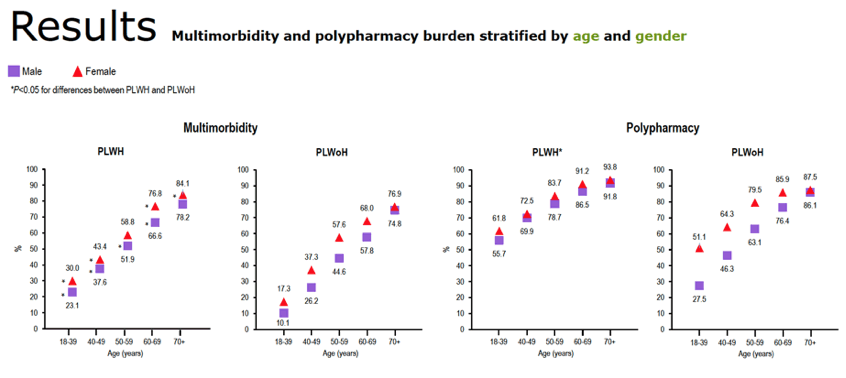
Mark Mascolini
Comorbidities and polypharmacy proved more frequent in people with than without HIV in a 60,000-person matched comparison [1]. But differences by HIV status also varied by age, gender, and racial or ethnic group. And people without HIV got worse marks for one comorbidity.
Accumulating evidence confirms that people with HIV carry heavier burdens of non-HIV comorbidities and multiple drug prescriptions than people without HIV. Understanding how these discrepancies may differ within age, gender, and racial subgroups can help clinicians anticipate screening needs and hone personalized care. To get a better grasp on comorbidity and polypharmacy patterns, Georgetown University researchers conducted this retrospective matched analysis.
The Georgetown team drew data from the Optum Research Database, which collects administrative claims of commercial and Medicare Advantage enrollees. For the HIV study group, they selected adults with a pharmacy claim for antiretroviral therapy (ART) or an HIV/AIDS diagnosis in 2018. They set the index date as the earliest ART/HIV claim and excluded people with evidence of antiretroviral use for pre- or postexposure prophylaxis.
The researchers matched each HIV-positive person to 2 people without HIV by age, gender, race, region, and insurance type, and they set the index date of HIV-negative people to equal that of the matched partner with HIV. Participation in the study required continuous health plan enrollment for 12 months before and 30 days after the index date. The Georgetown team determined comorbidities with ICD-10 diagnosis codes in the 12 months before the index date. Comedications did not include antiretrovirals. The researchers defined multimorbidity as 2 or more comorbidities and polypharmacy as 5 or more drugs excluding antiretrovirals.
The analysis included 20,256 people with HIV matched to 40,512 without HIV. Study group age averaged 52.3, and 62% were 50 or older. Women made up 20% of the study group, 65% had commercial insurance, and 35% used a Medicare Advantage plan. While 46% of participants were white, 28% were black, 14% Hispanic, 2% Asian, and the rest with other or unknown race/ethnicity. Charlson Comorbidity Index averaged 0.9 in the HIV group and 0.6 in the non-HIV group (P < 0.001).
Polypharmacy proved significantly more frequent in people with HIV, 76% vs 61%. Differences from the no-HIV group were especially pronounced in younger age groups but statistically significant in every age group. (For all following statistically significant differences, P < 0.05.)
- 18-39 years: 56.6% HIV vs 31.0% no HIV
- 40-49 years: 70.5% HIV vs 50.3% no HIV
- 50-59 years: 79.5% HIV vs 65.8% no HIV
- 60-69 years: 87.6% HIV vs 78.6% no HIV
- 70+: 92.4% HIV vs 85.5% no HIV
Polypharmacy was significantly more prevalent with HIV in every racial/ethnic group, in this order:
- Whites: 78.7% HIV vs 61.4% no HIV
- Blacks: 77.1% HIV vs 64.7% no HIV
- Hispanics: 69.2% HIV vs 51.9% no HIV
- Asians: 63.6% HIV vs 42.6% no HIV
Multimorbidity was more frequent in the HIV group (51% vs 42% overall) regardless of gender, and women had a higher multimorbidity rate than men regardless of HIV status:
- Women: 59.4% HIV vs 52.9% no HIV
- Men: 48.5% HIV vs 39.3% no HIV
Multimorbidity became more prevalent in each older age group and was always significantly more prevalent in people with HIV. Multimorbidity also proved significantly more frequent with than without HIV in every racial/ethnic group and was most frequent in blacks (54.7% HIV vs 48.8% no HIV), followed by whites (50.6% vs 40.3%), Hispanics (44.4% vs 35.4%), and Asians (37.8% vs 24.5%).
Rates of individual comorbidities were almost always higher-and usually significantly higher-with than without HIV, including hypertension, hyperlipidemia, neuropsychiatric conditions, chronic kidney disease, substance abuse, gastrointestinal disorders, cancer, and liver disease. Cardiovascular disease was significantly more frequent with HIV only in the youngest age group (18-39, 3.2% vs 1.2%). For all older age brackets, cardiovascular disease was only marginally more frequent with HIV.
Type 2 diabetes was significantly more frequent without HIV than with HIV in the 50-59 and 60-69 age cohorts, and significantly more frequent with HIV in the 18-39 cohort. In men type 2 diabetes was significantly less frequent with HIV (12.1% vs 14.9%). But in women type 2 diabetes was significantly more frequent with HIV (21.0% vs 19.5%). Hypertension prevalence was equivalent in men with and without HIV, but significantly more prevalent in women with than without HIV (44.6% vs 38.8%). Comorbidities that were significantly more frequent with than without HIV in both men and women were neuropsychiatric conditions, chronic kidney disease, substance abuse, gastrointestinal disorders, liver disease, cardiovascular disease, and cancer.
Black men with HIV had higher rates of several individual comorbidities than white, Hispanic, or Asian men with HIV, though researchers did not calculate between-race significance for these comparisons: hypertension, type 2 diabetes, chronic kidney disease, substance abuse, gastrointestinal disorders, cardiovascular disease, cancer, and liver disease. White men with HIV had a higher prevalence of hyperlipidemia and neuropsychiatric conditions than HIV-positive men in other racial/ethnic groups.
The Georgetown team concluded that people with HIV carry heavier comorbidity and polypharmacy burdens than people without HIV, and this disadvantage usually holds true across age groups, genders, and races. The investigators believe their detailed findings underline the need for an individualized approach to HIV management and antiretroviral therapy.
Reference
1. Paudel M, Prajapati G, Buysman E, et al. Higher comorbidity and comedication burden in women and young people living with HIV. IAS 2021, 11th IAS Conference on HIV Science, July 18-21, 2021. Abstract OAA0104.
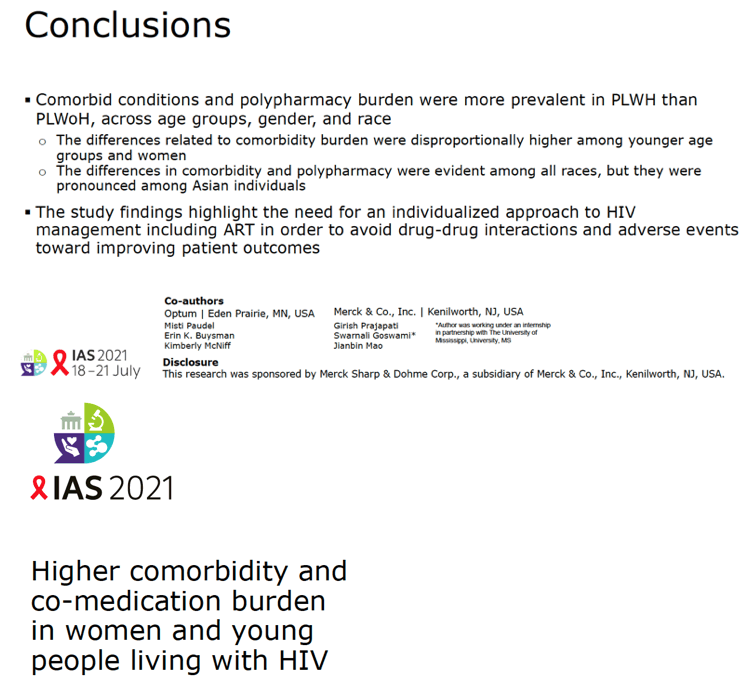
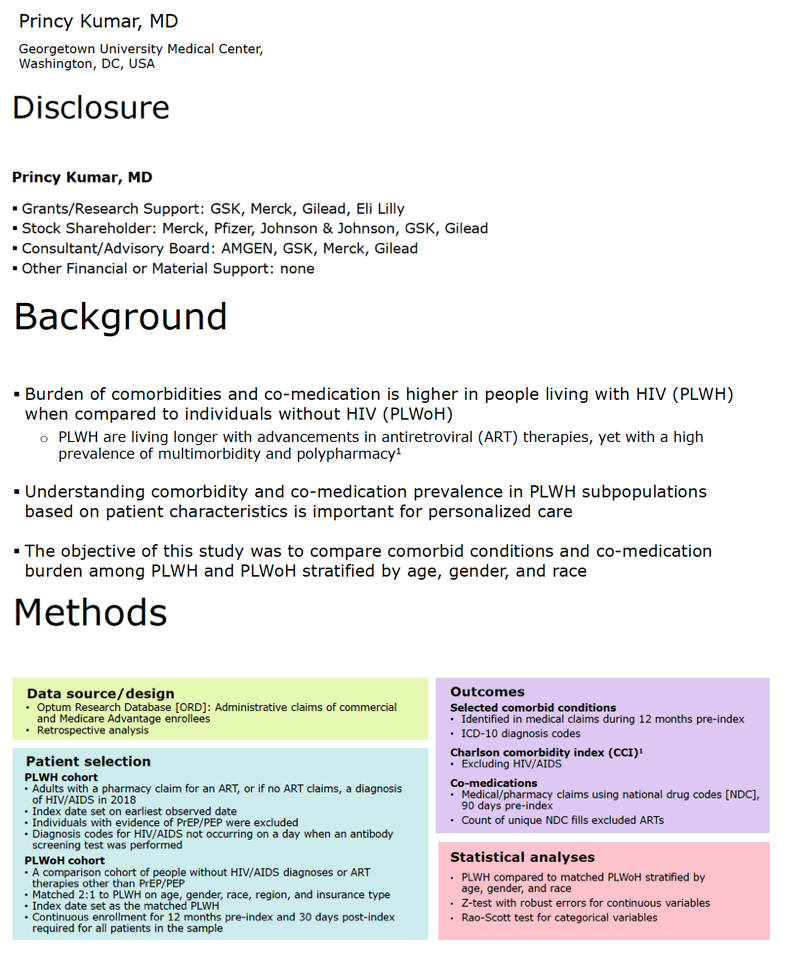
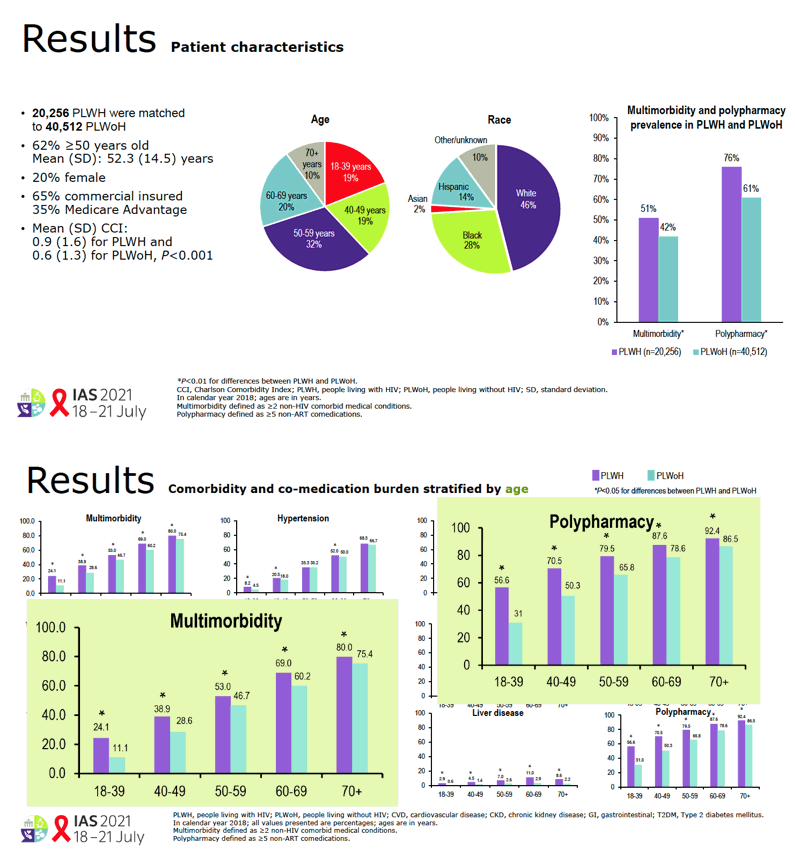
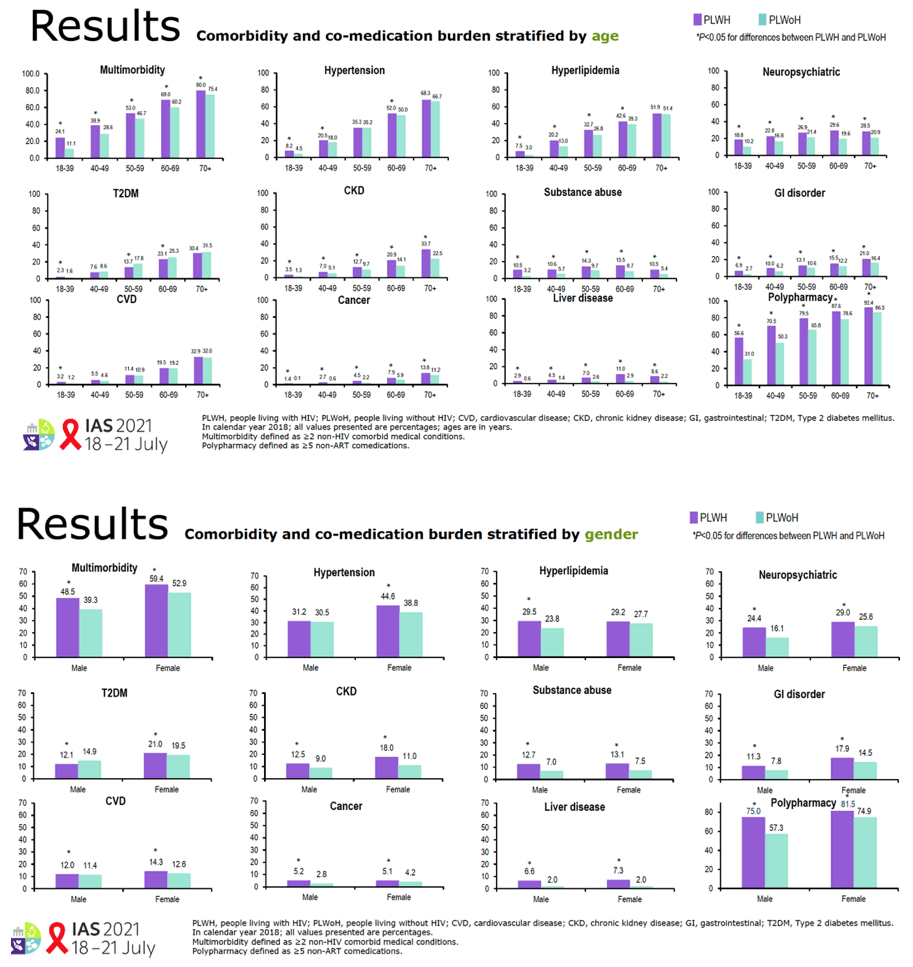
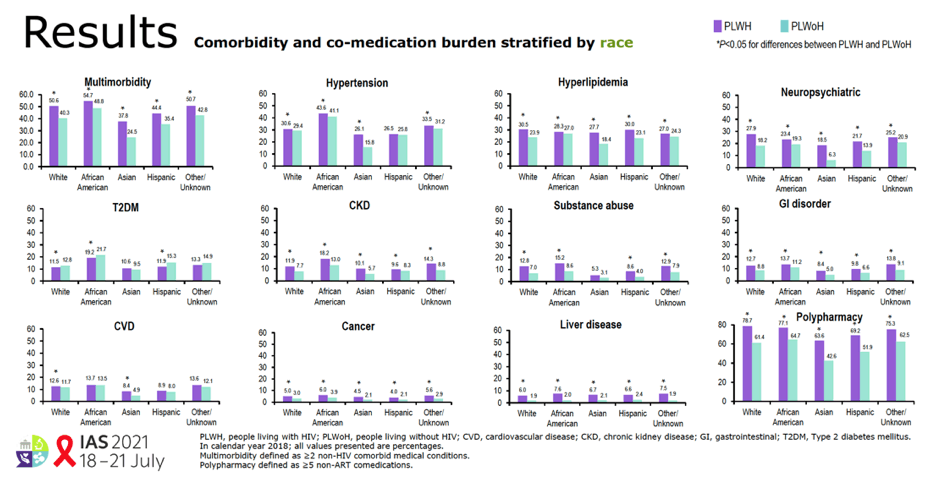
|
| |
|
 |
 |
|
|